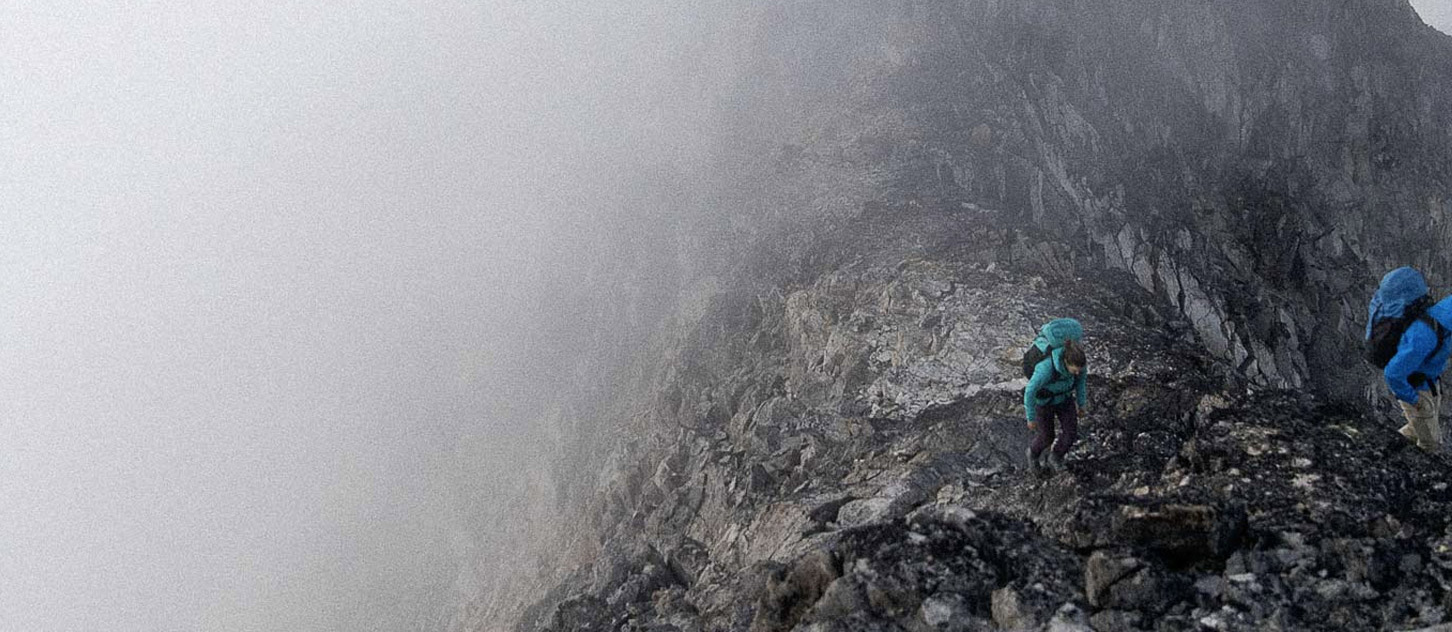
ACMG Mountain Conditions Summary for the Rockies and Columbia Mountains. August 20, 2020.
It continues to be an alpine summer to remember with good conditions reported in all zones and for all mountain pursuits. There is a caveat, though: depending on the weather, not every activity or route is in shape every day.
WEATHER
Last week ended with some stormy weather, which gave us precipitation in the form of snow at higher elevations. As we entered this week, the hot weather returned, although there was some electrical activity in the afternoons and evenings.
The coming week looks promising for the most part, after an early blip. On Friday evening and into Saturday, expect lightning storms and precipitation in most areas. After that, long-term models indicate that we are looking at mostly stable weather, with the possibility of afternoon/evening lightning and showers in some zones.
Temperatures will not be as high as we saw earlier in the month, with valley-bottom highs mostly in the high teens to low 20s. This translates into cooler alpine temperatures, which may not be conducive for some alpine rock climbing objectives. With the nights lengthening, there should be overnight cooling that will help with early morning snow travel.
CONDITIONS
Conditions will vary, according to daily weather. At this time of year, any precipitation event can be expected to give snow at higher elevations. Temperatures during clear days are still likely to be reasonably warm, and with the help of solar radiation, any new snow should disappear within a day or two. An exception to that could be the highest elevation north aspects.
With that in mind, nearly everything can be in good shape on any given day. Trails and crags are mostly dry, and, considering that it is late August, there is still good snow coverage on most glaciers. Snow conditions are well settled in most areas, even if there is not an overnight freeze. Many alpine rock routes are clearing quickly after precipitation events.
The highest peaks may still have snow issues. If you head to a technical route above 3000 m, there may be difficult conditions and increased hazard due to snow from recent storms, or lingering from the winter. A recent ascent of Temple's north face reported several significant rockfalls, probably linked to melting snow, and wet rock on crux pitches. But on some routes, the snow may be a help, as long as you pick a day where temperatures remain cold enough that melting does not increase risk.
HAZARDS
Most hazards will be those linked to warming temperatures: lightning storms, rockfall, weak crevasse bridges, cornices, and snow avalanches. Start early, move fast, and minimize your exposure time to these hazards by utilizing the terrain to your best advantage.
On the highest snow peaks, slab avalanches that fail on layers formed last winter are still possible. Again, the trigger could well be warming temperatures.
Lastly, fire season has come late this year but is here now in full force, especially in the Columbias and the west side of the Rockies. Be fire smart, and don't accidentally torch one of our favourite climbing zones. There are some fire-related closures in BC right now (e.g. Skaha Bluffs Provincial Park), so do your research before you commit to that long logging road drive.
OBJECTIVES
This week I am headed for:
- Nearly everything, with the exact objective decided upon based on the 24 to 72-hour weather forecast.
I am avoiding:
- Technical rock climbing on shaded routes, or routes where objective hazards increase with lingering snow, above 3000-3300 m.
- Any route type where risks will increase based on the 24 to 72-hour weather forecast.
Mark Klassen
Mountain Guide